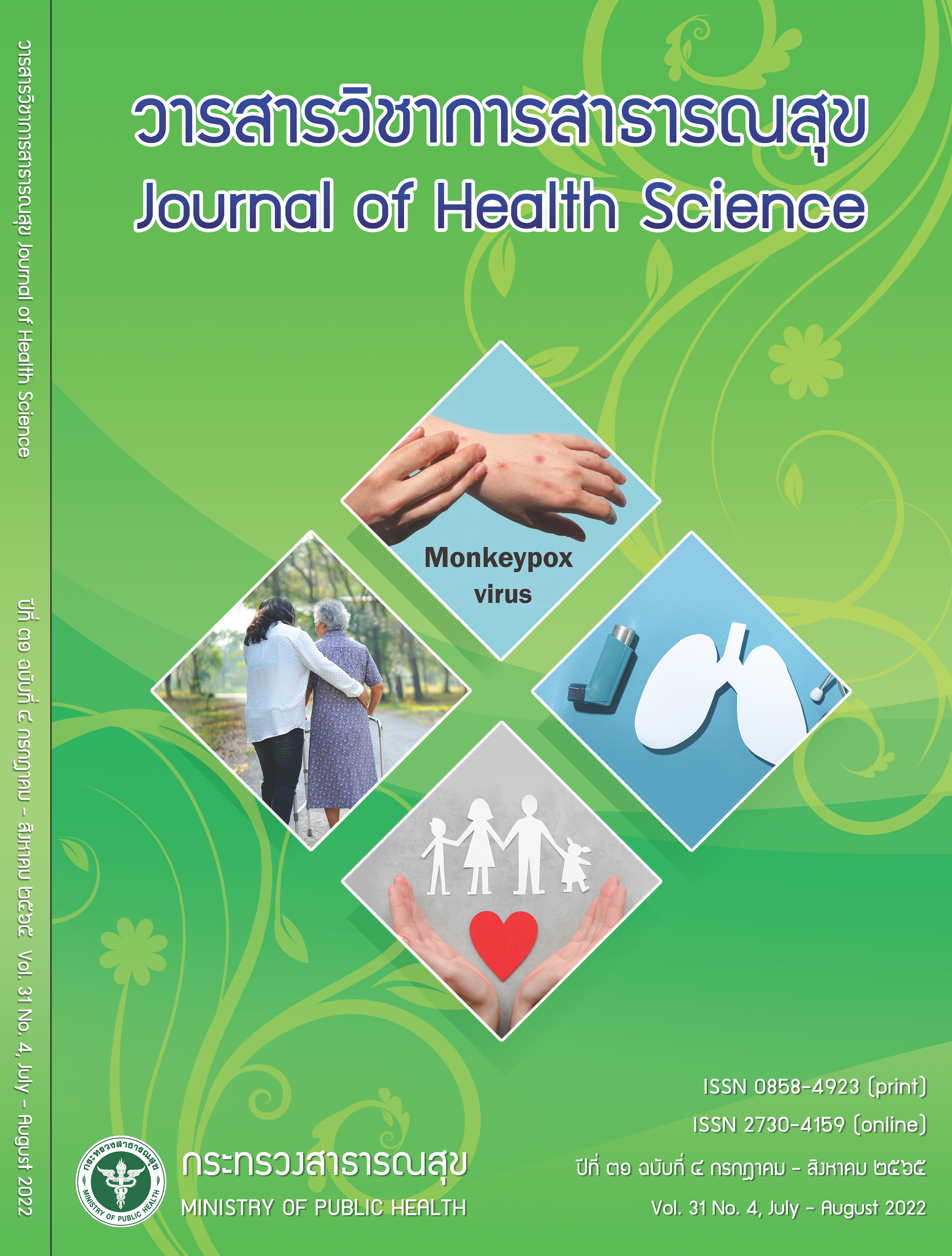Epidemiology of Suicide in Thailand, 2019 – 2020
Keywords:
suicide, epidemiology, ThailandAbstract
The objectives of this study were to study the suicide situation in Thailand and to compare the number of suicide deaths in the year 2019 and 2020, as well as to study on suicide prevention system and measures in Thailand to be used in making policy proposals for planning suicide prevention plan at the national level. The study was a mixed method in the form of explanatory sequential design. The quantitative study used descriptive statistics such as mean, percentage and analytical statistics such as correlation with chi-square, arithmetic mean comparison with independent t-test. Qualitative study used in-depth interview and analyzed by content analysis. The study found that suicide deaths in Thailand increased from 3,698 in 2019 to 4,440 in 2020. Male dead more than female (4:1). Male suicide deaths increased (p=0.003), especially among those under 25 years old (p=0.002). Marital status, widowed, divorced/separated, increased mortality (p=0.002 p=0.001 and p=0.000 respectively), the employed/ private work had an increase in mortality (p=0.001). Health region with the highest suicide rate was health region 1. The most common methods of suicide were hanging, followed by herbicide ingestion and the use of guns. Unemployed and indebted group had an increase in suicide (p=0.001 and p=0.000, respectively). Surveillance and suicide prevention systems had been developed for suicide prevention since 2001, but suicide data were analyzed at national level and regional level by Department of Mental Health and Mental Health Centers, there was still a lack of data analysis at the provincial level. Most of the prevention measures were carried out by Department of Mental Health, but there was still lack of policy support and participation of agencies involved in suicide prevention. Identification of risk factors was generalized and centralized indication, there was still lack of risk factor analysis at the provincial level. The target groups with increased suicide deaths requiring additional suicide prevention measures were (1) group of males younger than 25 years, and (2) groups who had changed their marital status. Policy recommendations: (1) suicide problem should be addressed as a national priority to establish national suicide prevention plan that all sectors involved; (2) suicide risk surveillance system should be established at the provincial level as well as defining suicide prevention measures that are appropriate for the area; (3) there should be measures to prevent suicide among people under 25 years old, most of whom are still students; (4) there should be measures to prevent suicide in groups with change in marital status; (5) there should be an integrated mission and collaboration between ministries related to suicide risk factors to implement consistent measures and provide social support to those at risk of suicide; and (6) there should be applied digital technology such as artificial intelligence that can detect the call for help of people at risk of suicide and alert those who responsible for suicide prevention on social media.
Downloads
Downloads
Published
How to Cite
Issue
Section
License

This work is licensed under a Creative Commons Attribution-NonCommercial-NoDerivatives 4.0 International License.







